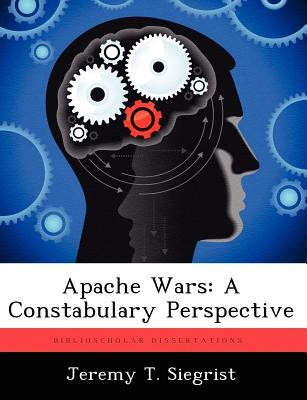
- We will send in 10–14 business days.
- Author: Jeremy T Siegrist
- Publisher: BiblioScholar
- ISBN-10: 1249458161
- ISBN-13: 9781249458166
- Format: 18.9 x 24.6 x 0.5 cm, softcover
- Language: English
- SAVE -10% with code: EXTRA
Reviews
Description
Although seemingly as antiquated as the horse cavalry, the lessons from the Apache Wars of 1865 to 1886 are still relevant to the US Army. Indeed, the US Army's current occupation of Iraq is remarkably similar to the occupation of New Mexico during the Apache Wars. The inadequacies of the Office of Reconstruction and Humanitarian Assistance (ORHA), and the Coalition Provisional Authority (CPA), mirror the inability of the Bureau of Indian Affairs (BIA) of the late 1800s to provide long-term security or social development to the population. Consequently, as on the frontier, the Army has been given a wide array of combat, security, and nation-building tasks for which it is untrained and under resourced. The resultant inability of the Army to provide security in Iraq has allowed an array of distinct insurgencies to thrive. Similarly, the frontier Army was also unable to conduct simultaneous combat, security, and nation-building tasks, which led to repeated Apache insurgencies. Consequently, lessons from the frontier Army may assist planners who face similar circumstances today. Analysis of the Apache Wars demonstrates that the success of historic constabulary operations may be explained by constabulary principles. This monograph contends that principles of counterinsurgency, drawn from theory and doctrine, are nearly identical in post-conflict environments to principles that guide constabularies, and that each can inform conclusions about the other. As a result, constabulary principles may be derived from the wealth of counterinsurgency theory and doctrine in order to compensate for the paucity of constabulary theory.
EXTRA 10 % discount with code: EXTRA
The promotion ends in 17d.23:47:49
The discount code is valid when purchasing from 10 €. Discounts do not stack.
- Author: Jeremy T Siegrist
- Publisher: BiblioScholar
- ISBN-10: 1249458161
- ISBN-13: 9781249458166
- Format: 18.9 x 24.6 x 0.5 cm, softcover
- Language: English English
Although seemingly as antiquated as the horse cavalry, the lessons from the Apache Wars of 1865 to 1886 are still relevant to the US Army. Indeed, the US Army's current occupation of Iraq is remarkably similar to the occupation of New Mexico during the Apache Wars. The inadequacies of the Office of Reconstruction and Humanitarian Assistance (ORHA), and the Coalition Provisional Authority (CPA), mirror the inability of the Bureau of Indian Affairs (BIA) of the late 1800s to provide long-term security or social development to the population. Consequently, as on the frontier, the Army has been given a wide array of combat, security, and nation-building tasks for which it is untrained and under resourced. The resultant inability of the Army to provide security in Iraq has allowed an array of distinct insurgencies to thrive. Similarly, the frontier Army was also unable to conduct simultaneous combat, security, and nation-building tasks, which led to repeated Apache insurgencies. Consequently, lessons from the frontier Army may assist planners who face similar circumstances today. Analysis of the Apache Wars demonstrates that the success of historic constabulary operations may be explained by constabulary principles. This monograph contends that principles of counterinsurgency, drawn from theory and doctrine, are nearly identical in post-conflict environments to principles that guide constabularies, and that each can inform conclusions about the other. As a result, constabulary principles may be derived from the wealth of counterinsurgency theory and doctrine in order to compensate for the paucity of constabulary theory.


Reviews